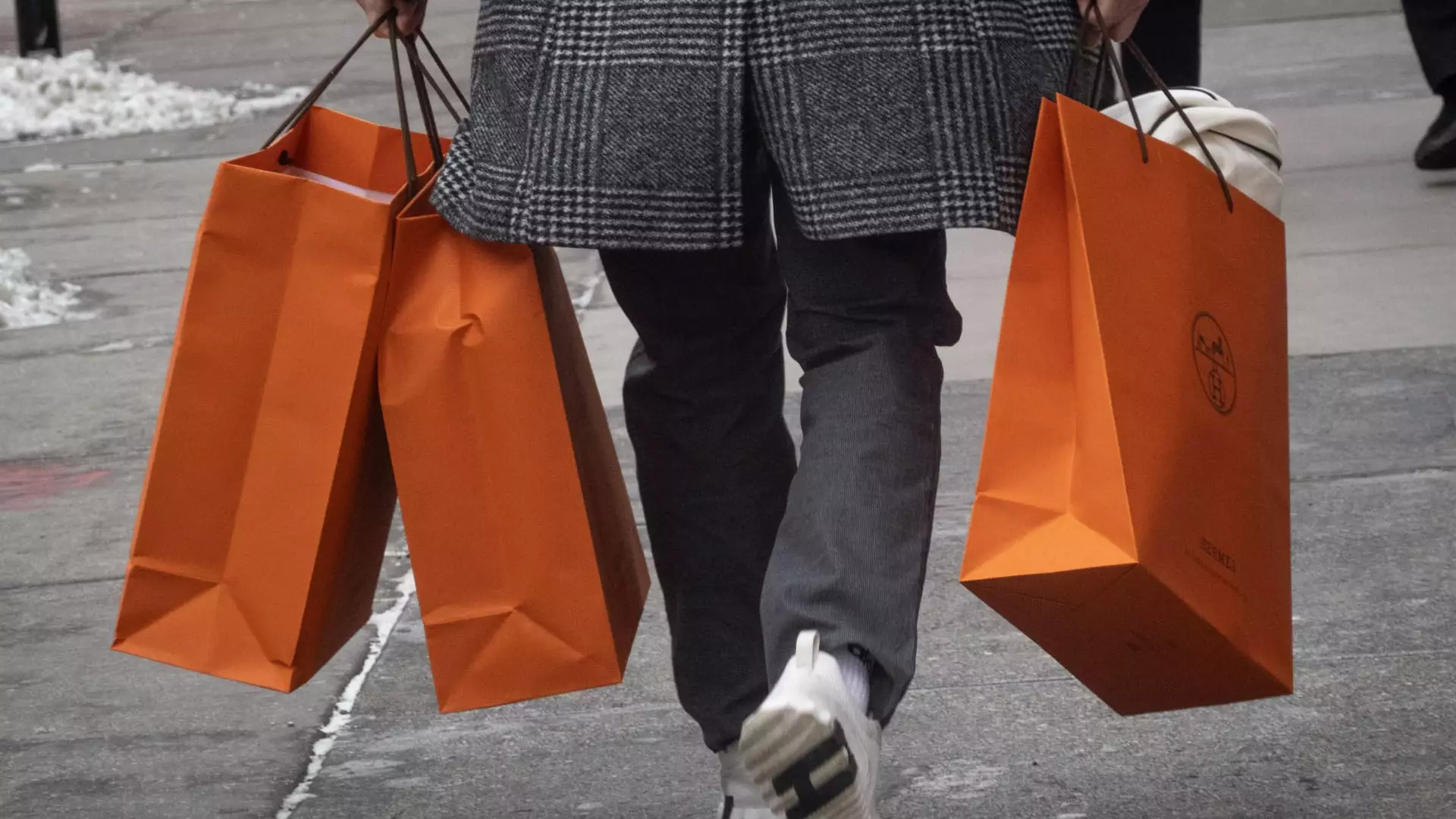The European luxury sector, long a beacon of extravagance and superior craftsmanship, now finds itself at a precarious crossroads in the face of unexpected U.S. tariffs. Traditionally viewed as insulated from economic turbulence due to their affluent customer base, brands such as LVMH, Richemont, Kering, and Hermes now reflect a more sobering reality. With an alarming 60% likelihood of a global recession looming, as indicated by JPMorgan’s CEO Jamie Dimon, the potential economic ripple effects from these tariffs appear more severe than initially perceived. Luxury brands may have enjoyed a heady revival post-Covid, but this newfound optimism has met with unnerving clouds that threaten to obliterate their hard-won gains.
The Tariff Tango: A Flawed Strategy
On the surface, President Trump’s announcement of a 90-day tariff pause and the shift to a 10% universal tariff might suggest a reprieve. Yet, this momentary calm does not translate into safety for European luxury brands. The real question becomes whether these high-end fashion houses will absorb the increasing costs or pass them on to consumers. Luxury products are expensive for a reason—the craftsmanship, brand heritage, and ‘Made in Europe’ allure are integral to their identity. High-net-worth shoppers are usually better positioned to absorb price hikes, but as the specter of a recession looms, complacency in pricing strategy may quickly turn into folly.
Predictions from analysts like Adam Cochrane of Deutsche Bank indicate that while the immediate impact of tariffs appears minor, the elusive “knock-on effects” could converge into an unwanted storm. If consumers tighten their belts out of fear or reality, even luxury items could become sacrificial within household budgets, undermining the very stability that these brands have enjoyed.
The Shadow of the American Market
While European luxury brands derive only 15% to 30% of their sales from the U.S., this market has emerged as a crucial growth engine, especially with anticipated declines in China’s consumer spending. Recent data further accentuates this troubling shift. Despite a resurgence in demand noted in some sectors, these figures appear increasingly fragile in light of recent geopolitical tensions. The imminent imposition of 125% tariffs could significantly dampen Chinese demand, thereby proving detrimental to brands already reorienting their focus to the American market.
Analysts highlight that luxury brands need to respect market dynamics and consumer sentiment if they are to navigate this turbulent environment effectively. The intertwining of U.S. market dependence and the ramifications of anti-European sentiment could tighten the noose on many luxury houses that once basked in the glow of profitability.
Consumer Confidence: The Real Enemy
The underlying issue extends beyond mere tariffs; it delves into consumer psychology. Economic uncertainty fosters a cloud of hesitation among wealthy shoppers, many of whom may feel compelled to delay extravagant purchases amid swirling fears of an impending economic downturn. Luxury brands often thrive on consumer confidence, a confidence that can be evaporated by market fluctuations or day-to-day volatility. The paradox is that, while luxury shoppers constitute a resilient demographic, they are also subject to the ebbs and flows of market sentiment.
This turbulent landscape has driven brands to reconsider their marketing and pricing strategies. New constraints could manifest in weaker brand loyalty or more price-sensitive consumers—situations that luxury brands are ill-equipped to handle, given their premium pricing and high operational costs.
The Winners and Losers in a Weakened Ecosystem
Inevitably, amidst this tumult, certain brands will navigate the storm better than others. Hermes and Burberry may have the robust brand equity and operational frameworks required to withstand these shocks. However, brands like Richemont and Moncler, lacking similar resilience or market adaptability, might find themselves considerably more exposed. It will be fascinating to see which brands can innovate and evolve in response to fluctuating market conditions.
What emerges from this situation is an evident reminder that the luxury sector cannot ignore the interconnectedness of global economics and local sentiments. A short-sighted approach to tariffs that disregards consumer behavior could lead to long-term ramifications that echo far beyond the luxury marketplace.
If we are to learn from this looming crisis, it would be prudent for European luxury brands to adapt to this new reality with foresight and agility. The luxury industry, fueled by centuries of prestige, must now contend with a new playing field where arrogance and stagnation spell inevitable doom.

